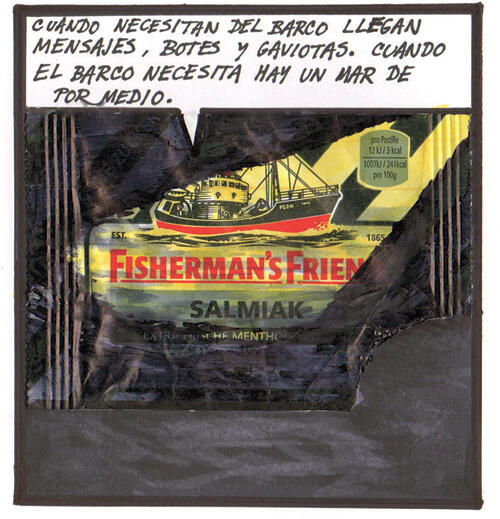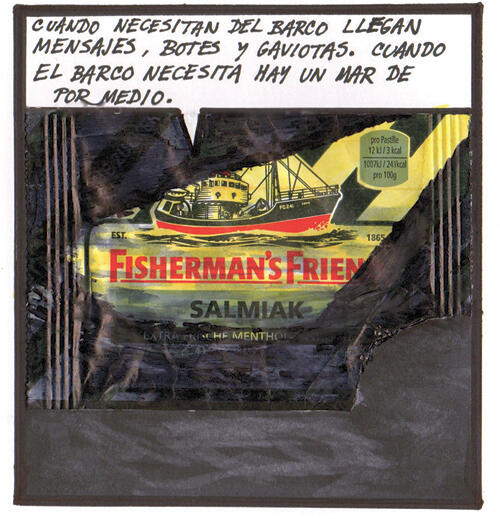Fernando Carabajal
Arróniz, Mexico City
Fernando Carabajal is one of those cultural producers who masters different expressive platforms with equal ease.

A visual creator and poet, his work reveals an oeuvre full of winks and cross-references that represents the tip of the iceberg of a vast expressive universe.
Carabajal has chosen the path of moderation, escaping from grandiloquence as a momentary attraction. The silences in his works anchor the viewer before pieces that do not reveal themselves in a first reading, but that demand repeated examination, recurring approaches.
His double work as a poet and as a visual artist creates a network of relationships between what is seen and that which generates it. Perhaps one of the important achievements in his work is that none of the pieces is tied to a single expressive discipline, while they are perfectly autonomous and each has its own expressive corpus.
Although the diversity of mediums and expressive languages chosen by Carabajal produces the impression that his are works belonging to different periods and series, a closer look reveals the presence of a conducting thread.
Each art object, irrespective of the medium and the support that contains it, opens a window onto the formal intentions of the artist, who has chosen also to assume the position of the viewer. The wrapping covers of the “Fisherman’s Friend” lozenges in their different presentations have been used by Carabajal to create a singular fleet of ships (the brand name emblem). Their unstable presence on the waters on which we see them float gives way, through the graphic-linguistic technique employed in comic strips, to ironic dialogues that take the place of the absent sailors.
Thus we read: “ Does the problem reside in the candies or in the drawing? No, it is in the everyday”, or “ The ship was ecologically responsible, although the sea had to be incinerated.”
A ship floats, almost intact, on silver brushstrokes. “ The discourse falls, but the words keep it afloat.” One of the most poetic texts is “ Time takes place above the sea. Pre-time takes place under the sea. The horizon – of words and actions ̶ contains our history .” Nothing can abate the cogency of: “ Ontologically, the shipwreck is a human mistake, although history has transformed it into its errata”.
After discrete and simple manipulations using color and text, each of these small candy wrappings has now become a sort of delayed piece of news that reaches us as if someone on the ship that has been multi-reproduced in those fragile pieces of paper had thrown a bottle containing these messages into the sea.
In another work Carabajal selected a snow-covered place to feature groups of participants concentrated on a race. Their bodies enter and leave the screen. Each self-absorbed runner passes in front of the camera until becoming a crowd thanks to the endless loop edition that creates an infinite procession of anonymous runners gliding silently on the snow.
The displacement of this author from one subject to another is similar to that of a tight-rope walker who puts his life at risk while moving between two points at a great height. Writing with a two-colored pencil, he decides which part red narrates, and which part is narrated in blue. Thus, a come and go of phrases and dialogues gradually structures a text which, in turn, narrates the way in which it develops itself, as if there were no author behind the two-headed pencil. In this way his work, duplicated in his discourse, constructs a building made of mirrors.
-
 Tinta y marcadores sobre envoltura de caramelos, 2013.
Tinta y marcadores sobre envoltura de caramelos, 2013.
Cortesía: Fernando Carabajal.
Mal del Mundo / Impresión cromógena 1 de 6 / 2012-2013. Cortesía: Fernando Carabajal




